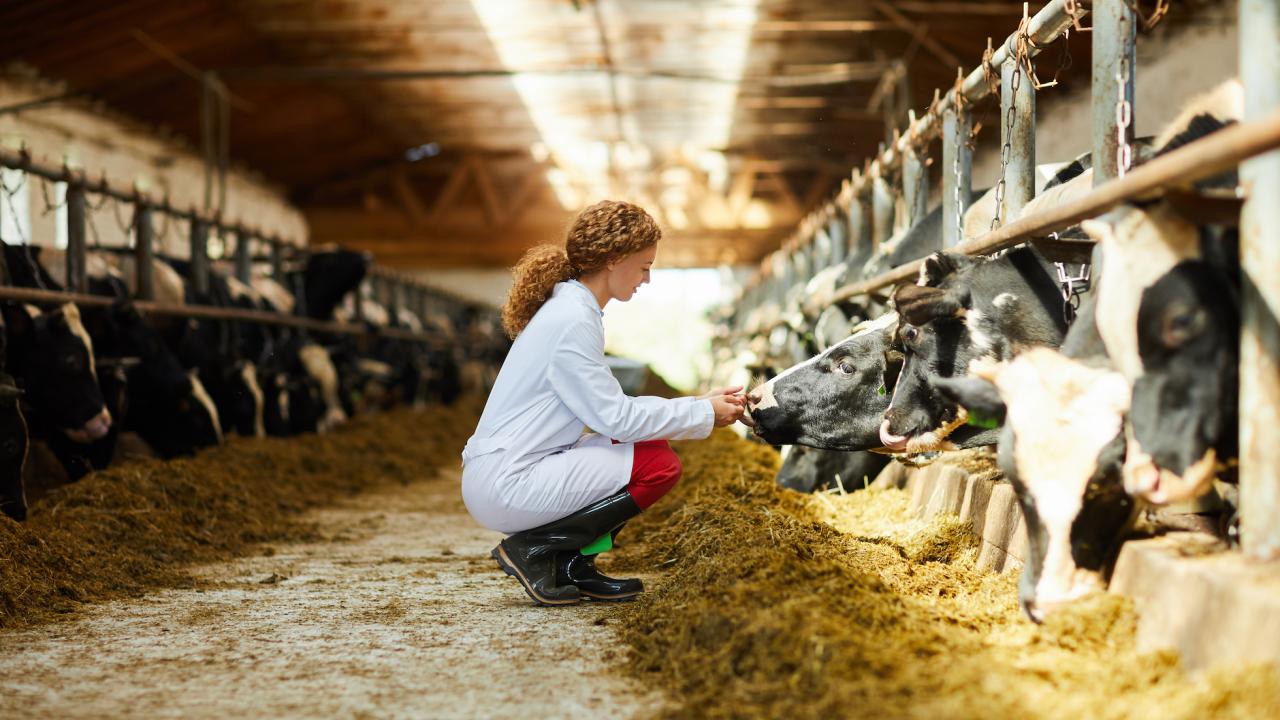
What is a life cycle assessment (LCA) and why does it matter for cattle?
By Sebastian Mejia Turcios, M.S.
Greenhouse gas emissions produced by a specific sector or industry are readily available for those interested. Many organizations such as the Environmental Protection Agency (EPA) and the Intergovernmental Panel on Climate Change (IPCC) report amounts in total or percentages of greenhouse gases generated by a particular industry. Likewise, companies report the environmental impact of their products as well. But how is it possible to estimate the greenhouse gas emissions and environmental impact from, let’s say, the entire U.S beef industry? Are emissions from each cow, in every farm across the country captured and measured? The answer is no. Such a task would be impractical to say the least.
These estimations are obtained through something called Life Cycle Assessment or more commonly abbreviated as LCA.
What is a cradle-to-grave life cycle assessment?
In essence, an LCA is a cradle-to-grave analysis that evaluates the inputs and outputs of a production system from the beginning to the end of its life cycle, hence the name. Inputs refer to all of the resources used to create a product – such as energy, or in the case of livestock, feed, water, etc. On the other hand, outputs include everything that we gain from the system, such as usable products, and of course, greenhouse gas emissions. It’s important to understand that when an LCA runs its course, it allows for a “cradle-to-grave” approach that encompasses everything involved in a production chain. This type of approach allows scientists to estimate the potential environmental impacts of a production system.
How is a life cycle assessment done?
Performing an LCA is not an easy task. Scientists follow a well-defined process, which includes several tasks and steps such as collecting data from reliable sources, which is a key factor in an accurate LCA. Experts trained to perform these complex analyses take on the tedious task of ensuring a proper evaluation of a system when undertaking an LCA. Additionally, there are regulations such as ISO 14040 and ISO 14044, which establish the necessary steps to perform a proper LCA. Having a defined framework for an LCA is extremely important in order to hold these types of analyses to the same standards, especially when different assessments are compared across the board.
An LCA must include four critical steps:
This first step requires defining the functional unit and the system boundaries that will be considered for the LCA. Essentially, the functional unit must be the best representation of a system in terms of how the product of the system is used. For example, when the LCA of beef production is under evaluation, the best functional unit to assess this system would be 1 kg of boneless beef, as this is the end product and the best representation of the system, and where emissions stop being produced. The system boundaries can be described as the limits of the LCA. This means that if the U.S beef industry is being assessed, anything happening outside of the U.S cannot be explained by this LCA. In other words, the scope of the analysis is not taking into consideration events that occur outside of the system; therefore, this type of assessment is system-specific and inaccurate if it were to be applied outside of the LCA boundaries.
- Inventory analysis
The inventory analysis accounts for all of the inputs (feed, water) and outputs (product, greenhouse gas emissions). Here, it is crucial that the considerations include all raw materials necessary to manufacture a product (inputs), and everything that is extracted and emitted by the production system (outputs). The more detailed the inventory analysis is, the better the accuracy of the LCA, which will consequently help our understanding of the environmental impact of a product or system.
- Impact assessment
The tittle gives this one away. The impact assessment is the evaluation of the system within its environment or ecosystem, in other words, we can assess how impactful a system like the livestock industry is towards the environment. This is where an LCA becomes extremely important. After all of the data has been collected, and the system boundaries as well as the functional unit have been properly established, scientists can make estimations about the size of a product’s environmental impact. This is what makes an LCA powerful. Having the ability to visualize the impact of a production system on the environment is crucial to understand the types of decisions that need to be made in order to achieve future goals.
- Interpretation
Finally, the interpretation stage is where conclusions can be made from the analysis and model validations, to ensure that the conclusions are supported by the data utilized in the model.
Are Life Cycle Assessments really that useful?
Life cycle assessments are a complex set of mathematical equations. They’re extremely powerful tools for helping different entities around the world make key decisions for products, services and entire industries. However, certain considerations must be taken, especially when it comes to making comparisons between different systems. It’s crucial to understand the boundaries of each LCA. For example, when an assessment that reports global emissions is compared to one that is specific to a region or a country, there is a complete disregard for system boundaries within each model and therefore, any conclusion from such comparisons are extremely inaccurate and lack a serious foundation.
Similarly, when emissions of the beef industry are compared and reported to be higher than those of the transportation industry, this is clearly a disproportionate and a flawed assessment. Let’s not forget that an LCA performed on a system, such as the U.S beef sector, has followed a “cradle to grave” approach, which includes everything from the raw materials to the environmental emissions. If the same approach was used for the transportation industry, then the comparison would be fair; however, it is highly unlikely that the two would even come close to each other.
In terms of the beef industry in the U.S, several publications have reported different outcomes as far as the environmental impact of beef is concerned. Most recently, a peer-reviewed article showed an LCA of the environmental impacts of a beef system in the U.S, following all of the regulations required to do a proper assessment. These analyses give us the opportunity to understand where the livestock industry truly stands in terms of its environmental impact, but also what approaches can be implemented to reduce said impact in order to make the industry more sustainable.
Sebastian Mejia Turcios is a Ph.D. student in Dr. Frank Mitloehner's lab at UC Davis.

Is GWP* really 'fuzzy math?' You decide.
Has the beef industry landed on a metric that finally gives it a rosy glow? Is a new system of measurement absolving the sector from much of the global warming blame it’s been shouldering? And if so, is it all too good to be true?
